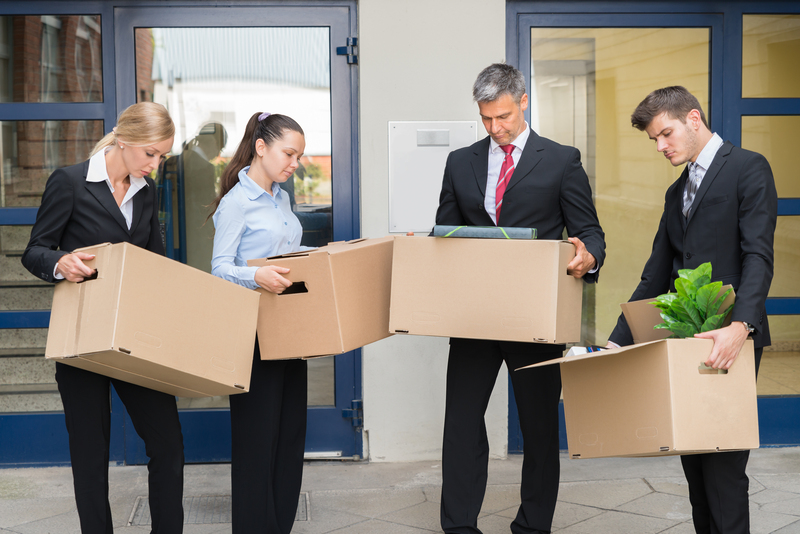Precision and Care: The Professional Way to Move Your Piano
Posted on 14/06/2025
Precision and Care: The Professional Way to Move Your Piano
Moving a piano is far from an ordinary task. These majestic instruments are not only heavy and cumbersome but also extraordinarily delicate and valuable. Whether you own an upright, a console, or a grand piano, ensuring your piano's safety during a move requires more than sheer strength--it demands specialized expertise, meticulous planning, and the right equipment. In this comprehensive guide, we'll explore the best practices for piano relocation, why professional piano movers are essential, and all the steps you should follow to achieve a safe and stress-free move.

Understanding the Complexity of Piano Relocation
Pianos are not only valuable monetarily; they often hold great sentimental significance. However, their structure is intricate, with thousands of moving parts that need to be protected from impact, temperature changes, and humidity. A careless move can cause:
- Exterior damage such as scratches and dents
- Internal damage to the action mechanism
- Poor tuning stability post-move
- Long-term issues with resonance and sound quality
To move a piano with both precision and care, it's vital to combine expertise, correct technique, and specialized tools.
Why Choose Professional Piano Movers?
When considering a move, many people underestimate how challenging it is to transport a piano safely. Unlike moving general household furniture, pianos demand expert handling due to their exceptional weight distribution and sensitivity.
Key Reasons to Hire Professionals for Your Piano Move
- Specialized Equipment: Moving companies specifically experienced in piano relocation use custom dollies, straps, and padding.
- Trained Team: Professional movers are trained to disassemble, maneuver, and transport pianos of all sizes.
- Insurance Coverage: Reliable moving companies offer insurance, safeguarding you from unexpected damages.
- Risk Reduction: Experts minimize the risk of injury and property damage compared to DIY methods.
Expert piano movers understand how to handle every aspect of the move, from proper lifting techniques to accurate positioning within a new room or home. Their experience is invaluable, especially when navigating stairs or tight hallways.
Professional Piano Moving: Step-by-Step Process
Every professional piano relocation follows a strict process, ensuring every detail is handled with care and accuracy. Here's how reputable movers approach the task:
1. Assessment and Planning
A thorough pre-move assessment is crucial. Professionals will consider:
- Type and size of the piano (upright, baby grand, concert grand, etc.)
- Required disassembly steps, if necessary
- Access points, doorways, stairs, and elevators
- Environmental factors like weather or humidity
Careful planning allows movers to determine the best strategy and allocate resources appropriately for efficient piano moving.
2. Proper Packing and Securing
Each part of the piano--legs, pedals, music stands--may require careful removal and individual wrapping. Strong, padded blankets and wrapping materials protect the instrument against scratches, bumps, and dust during transit.
- Grand pianos are partly disassembled, with the legs and pedal lyre removed and separately padded.
- Upright pianos are securely wrapped, with all moving pieces stabilized.
Securing all components ensures that no internal parts or finishes are compromised during the journey.
3. Lifting and Moving Techniques
Using proven moving techniques and specialized piano dollies, professionals lift and maneuver the instrument without causing strain or displacement of its intricate internal components. The process usually involves at least three people:
- One guiding and steadying the piano
- Two or more managing the weight and direction
The piano is always kept upright as much as possible to preserve soundboard integrity. Corners and thresholds are navigated with precision and coordinated communication.
4. Transporting the Piano
Once safely loaded, the piano is secured within the transport vehicle using professional-grade straps and anchors. Climate control may also be necessary, as fluctuations in temperature and humidity can affect the instrument's wood and tuning stability. Professional piano movers ensure the piano is protected from sudden movements or external pressure during transit.
5. Delivery and Reassembly
Upon arrival, the process reverses: movers carefully unload, reassemble, and position the instrument in the desired location. Final checks confirm that:
- No parts were lost or damaged
- The piano is level and stable
- Superficial cleaning is performed as necessary
Commonly, a post-move piano tuning is recommended, as even the most careful transport can impact sound quality.
Comparing DIY vs. Professional Piano Moving
The temptation to save money with a DIY approach can be strong--but it comes with serious risks. Here's how a professional move outshines a DIY effort:
Advantages of Using Professional Piano Movers
- Skill and Experience: Years of handling different piano types translates to superior moves.
- Appropriate Equipment: Access to industry-standard tools means safer handling.
- Insurance: Accidents happen, but insurance protects your investment.
Risks of DIY Piano Moving
- Lack of Training: No expertise can damage your instrument and your property.
- Insufficient Equipment: Standard moving tools are not enough for most pianos.
- Risk of Injury: Pianos typically weigh between 300-1,200 pounds; improper lifting leads to serious injuries.
In summary, trusting the experts is the only way to ensure the safety of both your instrument and your home--or your back.
Types of Pianos and Their Unique Moving Requirements
Each variety of piano presents distinct challenges during a move. Here's an overview of the most common piano types and what makes each unique:
Upright Pianos
- More compact but still very heavy (several hundred pounds)
- Vertical string and action orientation requires stabilization during transit
- May fit through most standard doorways, but careful angle management is necessary
Grand and Baby Grand Pianos
- Larger footprint; requires leg and pedal lyre removal
- The lid and keyboard must be securely padded
- Complex internal structure demands exceptional precision
Console and Spinet Pianos
- Similar in structure to uprights but often lighter
- Still require coordinated lifting and protection for internal components
Regardless of the piano type, professional assessment and custom planning are essential for a successful move.
Frequently Asked Questions About Moving Pianos
How Much Does It Cost to Move a Piano?
The price typically depends on factors such as:
- Distance between locations
- Type and size of your piano
- Stair and floor access
- Required equipment and labor
On average, local moves may range from $150 to $500, while long-distance piano transport can exceed $1,000. Always request a detailed quote from your chosen mover.
Is Piano Tuning Necessary After a Move?
Yes. Even the most expertly executed move can affect tuning. Allow your piano to acclimatize for a week before calling a professional tuner for optimal sound quality.
Can I Move My Piano Upstairs or Downstairs?
If your home has stairs, only experienced professionals should attempt such a move. The combination of weight, awkward angles, and the risk to both piano and mover make this a specialist task.
How Do I Choose a Reliable Piano Moving Company?
Look for companies that offer:
- Years of experience with piano relocation
- Proper licensing and insurance
- Positive customer reviews and testimonials
- Transparent pricing and contracts
Preparing Your Piano for a Move: Owner's Checklist
Before your piano movers arrive, there are several preparatory steps you can take to smooth the process:
- Clear a pathway: Remove obstacles along the route from the piano to the exit.
- Stabilize environment: Keep rooms at consistent temperature and humidity before and after the move.
- Communicate with movers: Share details about building access, hallways, and any restrictions.
- Secure small parts: Keep bench, sheet music, and accessories separate from the piano.
- Take photos: Document your instrument's condition for insurance purposes.
Following this checklist helps ensure your piano moving process is fast, smooth, and precise.

After the Move: Caring for Your Piano in Its New Home
Proper post-move care is crucial. Once the move is complete:
- Let your piano acclimate in its new environment for at least a week.
- Schedule professional tuning to restore sound quality.
- Wipe the case and keys with a soft, dry cloth.
- Monitor temperature and humidity: Ideal conditions are about 68?F (20?C) and 42% humidity.
- Avoid direct sunlight and drafts, which can damage finish and affect tuning stability.
Treating your piano with ongoing care preserves both its value and its musicality for years to come.
Conclusion: Why Precision and Care Matter in Professional Piano Relocation
Moving a piano is not a job for amateurs. It's a delicate dance between brute strength and sensitive handling, requiring precision, care, and experience every step of the way. Professional piano movers use specialized methods, equipment, and knowledge to ensure your prized instrument arrives safely and soundly at its new home.
Whether you're moving across town or across the country, choosing the right professionals for piano transportation will protect your investment--and your peace of mind. By following the steps outlined above and relying on expert services, you can rest assured that your piano's journey will be as harmonious as its music.
When it comes to piano moving, precision and care aren't just words--they're the keys to a perfect relocation.








